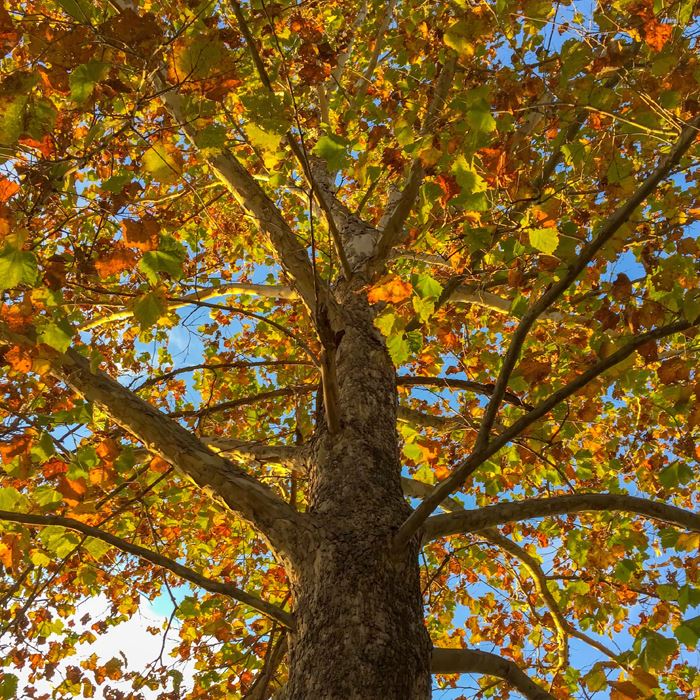The Tree with More

By Karen Menard
Metroparks is home to a tree giant -- the American sycamore. The species is indigenous to eastern North America and grows in many of northwest Ohio’s floodplains, swamp forests and along rivers.
Boasting an average height of 75 to 100 feet with a trunk diameter of 3 to 8 feet, the sycamore is considered the largest hardwood tree in North America. The Ohio champion tree measures 124-feet-tall with a trunk circumference of over 35 feet!
Sycamores are long lived, but often become hollow at around 200-300 years. The sapwood stops functioning and fills with resins and waste materials that harden and fill its heartwood core. When this rots, the tree becomes hollow, but can still live on, continuing to support native wildlife like nesting owls, wood ducks and roosting chimney swifts. Less becomes more as wildlife benefits from these types of natural cavities for homes and cover.
In fall, these trees not only provide a beautiful visual display of mottled, yellow-orange leaves, but also do a great job satisfying our other senses.
- Crumpling a downed sycamore leaf in the fall will release a wonderful cinnamon-like scent into the air.
- Its leaves and bark are rich in organic oils, which, in the past, have been used in the manufacture of perfumes.
- Its patchwork bark takes on a torn wallpaper effect and feels rough. Older bark sloughs off to reveal the younger inner bark which is smooth to the touch.
- Look up high to view the smooth, white branches and trunk toward the top. This stark feature casts an obvious glow along riverbanks and historically aided early navigators in the right direction.
Consider checking out a tall American sycamore in the Metroparks this fall. Some of the best places to see them are along the Maumee River at Side Cut and Providence, along the Ottawa River at Wildwood Preserve accessed via the Blue Trail, and in many areas of the Black Swamp woodland at Pearson. If you walk these sites in late fall through early spring, also look for the small brown seed balls dangling from the branches. In the spring, the fluffy seeds (giving the sycamore the nickname “buttonwood”) will break apart and float on the wind or water.
Did You Know?
Native Americans hollowed out sycamore trunks for dugout canoes and the cross sections of large trunks were used as early cart wheels by pioneer settlers.